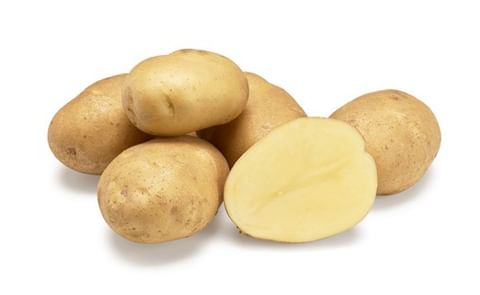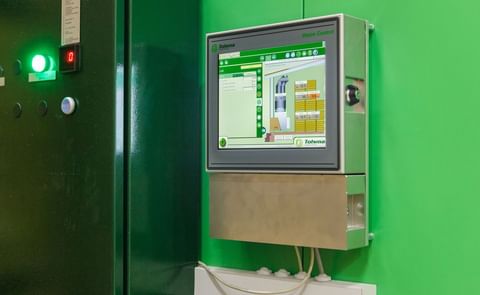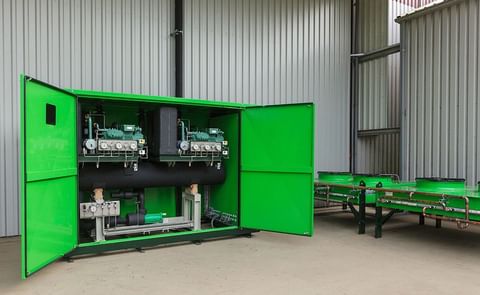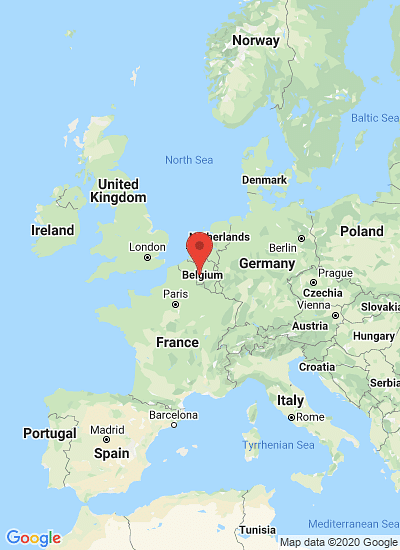Agriculture company Vandamme opts for a quality boost with new cooling
Agriculture company Vandamme opts for a quality boost with new cooling
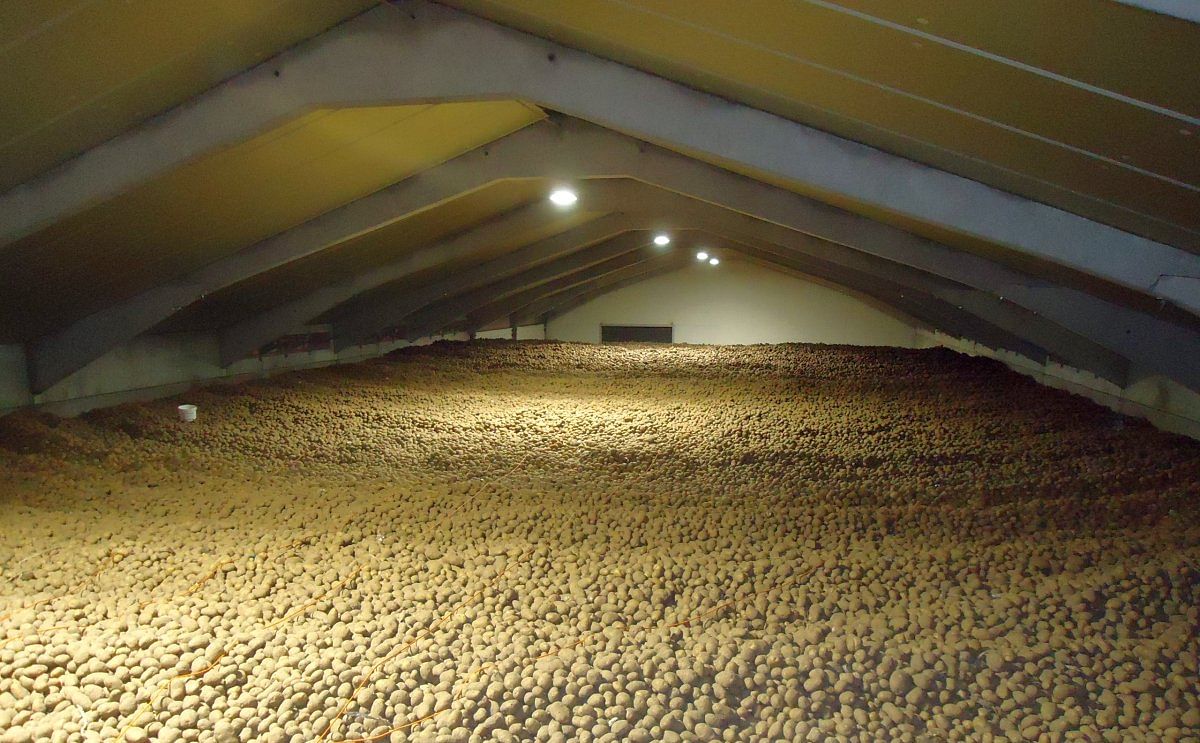
Edward Vandamme helped from a young age on the family business in Woumen (Diksmuide) in Belgium. Since 2013 he has been in the company together with his two uncles Bart and Filip. In the meantime, wife Annelies has also taken that step.
The company focuses on non-intensive arable vegetables for the industry. In addition to potatoes, also carrots, kohlrabi, yellow turnip, and spinach.
They grow green beans and onions for the fresh market. The storage capacity consists of 1.700 tons of potatoes, 700 tons of onions, and 3.000 tons of carrots.
Storing potatoes is not new for the agriculture company Vandamme. They have extensive experience with Bintje in non-automated storage. Since 2015, they have been storing potatoes of the Fontane variety in a new potato storage with above-ground ducts.
A mechanical cooling installation was also installed this year.
According to Vandamme, mechanical cooling is an excellent basis for long-term storage of potatoes without loss of quality. In addition, cooling, in combination with 1,4SIGHT, is a suitable alternative to chlorpropham as a sprout inhibitor.
A day out with storage specialists
Also, the onions are stored in their own storage for a few months after the harvest. After November they make way for carrots that remain in storage until January. However, this is difficult without cooling. That is why a Tolsma Vision Control storage computer was installed in 2017.
Edward Vandamme:
“The storage of carrots appealed to us and an appointment with Peter de Waal and Arjan van Hassel van Tolsma was made in no time.”
“They took us for a day to companies in the Netherlands that store carrots in boxes or in bulk. That day we learned a lot about carrot storage.”
“Thanks to the pleasant cooperation and the trust that has been built up, the choice was quickly made.”
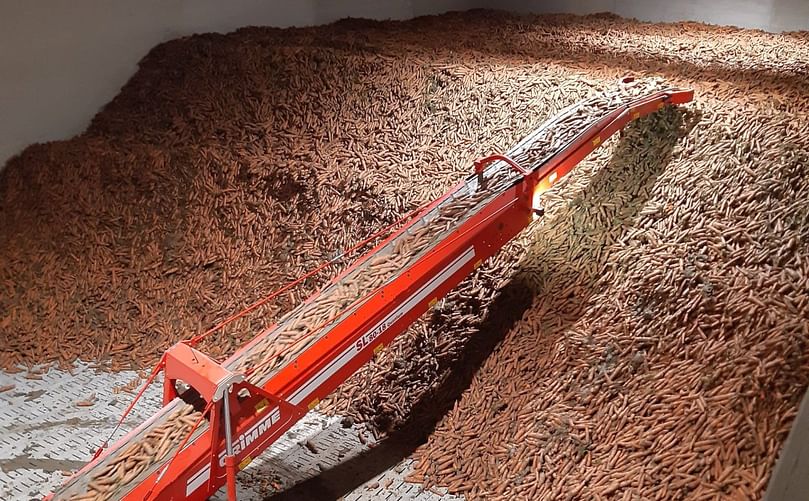
In 2020 a new double shed was built for the storage of winter carrots.
Two separate cells
On the advice of Tolsma, two cells were chosen for bulk carrots. Edward himself came up with the idea of building a pressure passage between the two cells, using an 'or-or' system.
With the same fans and air cooler, he can now cool cell 1 or cell 2. A pipe has also been installed to the potato shed. From the end of December it can also be cooled there. The natural refrigerant CO2-propane has been chosen.
Edward Vandamme:
“The social trend towards more CO2 neutral production methods is growing. In any case, our installation is an investment for the future.”We got help where needed
The first carrots were stored at the end of November at a temperature of 8°C. In one week, the first cell was filled and cooled to 0°C to 1°C within two weeks. The carrots are delivered from February to the end of May.
Last season was a difficult year for carrots. The turnout was slow, growth was not optimal and the harvest took place in wet conditions.
Edward Vandamme:
“Throughout the year we had to pull out all the stops to keep diseases under control. Peter de Waal visited regularly with good advice.”Minimal weight loss
“But Johan Van Hees also regularly checked our storage computer and helped make adjustments where necessary.”
Mechanical cooling has become the largest consumer of energy. Especially the first two weeks after harvest, where we cool to 1°C. The cooling runs continuously during this period.
After cooling for five hours, defrosting takes place for 30 minutes. Once the carrots are around 1°C, the cooling will run for less than 10 hours a day.
Edward Vandamme:
“It comes with an expensive price tag. On the other hand, we have a sustainable installation with which we minimize weight loss of the product and have relatively low energy and maintenance costs. Tolsma’s price-quality ratio is really good.”Project ‘Vandamme’ technically highlighted
An existing potato warehouse is equipped with a cooling unit for 1.220 tons of potatoes. Next to the potato shed a storage place for carrots has been built (2 x 940 tons in bulk) with a ‘double floor’.
This offers the possibility to place the ducts under the floor. The concrete floor above is provided with slots so that the air distribution is optimal.
- A Green Cool Unit-Indirect (GCU-I) has been chosen. Ideally suited when different products are stored under different climates. The cooling unit primarily cools with the natural refrigerant Propane (very high operational reliability and low maintenance costs). Secondary, a food-safe refrigerant (propylene glycol with water) is used, so that the system content with propane remains very small.
- Sensors (temperature, humidity, and CO2) transmit information to the Vision Control (storage computer) that controls the climate in the storage.
- New storage areas are often so well insulated that the CO2 content increases during the storage period. However, sufficient oxygen is essential for the product to be stored. That is why CO2 has been used. Regular air refreshment in the storage area prevents deterioration of the frying quality of potatoes. Regular air refreshment is also important in carrot storage to maintain product quality.
- The CO2 refreshment fans have an electronic exhaust hatch. This removes waste air and prevents warm air from entering the storage facility as long as it is not being refreshed. This results in significant energy savings (fewer running hours of the cooling installation). Because Vandamme uses the energy management module in the Vision Control storage computer, they save considerably on energy costs.
- To limit the drying of the carrots, a special mixing-injection control was chosen for the air coolers. The average surface temperature of the cooler remains higher with regard to the product temperature (less dehydration of the product and less frost formation on the air coolers). This allows the carrots to be stored at 0,5°C without the need for a forced defrosting system!






